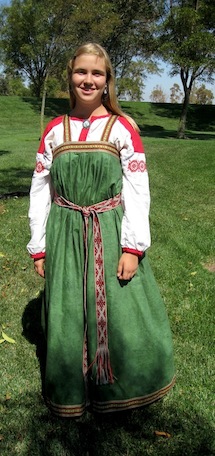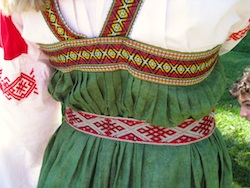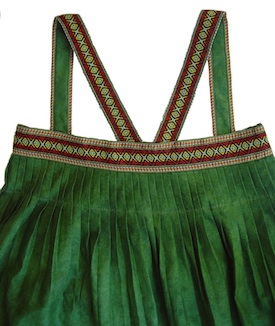
| Outfits >>> Replicas >>> Young girl's outfit | ||||

|
| |||
|
Citizens of Plekhovo village believe they are descendants of "slushily lyudi" - soldiers who were relocated to Plekhovo in the 17th-18th century from Northern Russia. Plekhovo people treasure their traditional clothing style as a cultural heritage, which connects them with their "land of ancestors". One of our team members owns a real Plekhovo outfit (it was donated by Elena E. Vassilieva - an ethnographer, Doctor of Arts, professor of St.Peterburg State University of Arts and Folklore). This outfit has been used as an everyday work clothes. It consists of a black cotton dress (sarafan), and a creamy-grey shirt (underdress) with no decoration. As this costume belonged to a married woman, the shirt has a waist-long cut on the front side (this cut was made to allow breast-feeding). Making this project, we don't want to create an exact replica of an everyday outfit. We tried to imagine, how a girl's costume would look like. For a sarafan, we copied a cut and a shape precisely, but changed a color to green, as more joyful and appropriate for a young girl. For a shirt, we sewed a general northern-style ankle-long underdress decorated in accordance with an age of a wearer.
| ||||
Sources (in Russian)
| ||||

